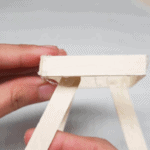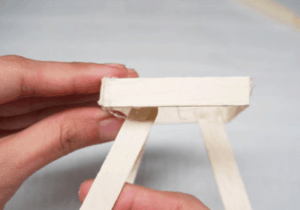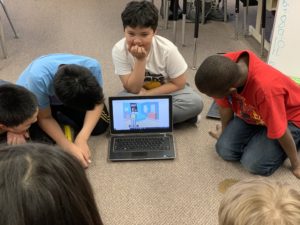Section Navigation
Introduction
Structural engineering depends largely on the knowledge surrounding different materials and their properties. Structural engineers mainly focus on creating ‘frameworks’ or ‘shells’ for structures such as buildings, bridges and tunnels. They must consider the stresses and pressures that the surrounding environment might have on the structure itself. Structural engineers ensure that their designs and materials selected can withstand environmental conditions such as Canadian winters. Environmental conditions that might be considered are the heavy snowfalls experienced in the town of Gander located in Newfoundland and Labrador or the strong winter winds experienced in Calgary each year that are known as ‘Chinook Winds’.
Computational thinking supports how a student thinks about problem solving including decomposition, pattern recognition, abstraction and algorithms. It is a fundamental mindset essential to any engineering task such as structural engineering. The Engineer Design Process works through an algorithm that includes the problem, research, ideation, planning, prototyping, testing and redesign.
Learning Goals
- Students will explore structural engineering by using recycled newspaper and tape to build the tallest freestanding tower possible.
- Students will manipulate the newspaper and tape to create strong load bearing structures that can support and resist a load.
- Students will explore environmental conditions that play key roles in structural engineering.
- Students will learn the importance of structural engineering to ensure that buildings, tunnels and bridges can withstand environmental conditions.
Vocabulary
Structural Engineers - design ‘frameworks’ or ‘shells’ that support man-made structures such as buildings, bridges and tunnels. Structural engineers must consider many conditions when designing a structure such as environmental conditions and building materials.
Lateral Loads - an interaction causing a horizontal force to act upon a structure (for example – a building or tower during a windstorm or earthquake).
Force - an interaction upon an object which pushes or pulls the object.
Gravity - is a type of force that attracts objects with mass (or weight) towards one another.
Guiding Questions
- What are the names of some of the tallest freestanding structures in the world?
Answer: CN Tower (Toronto, Canada), Burj Khalifa (Dubai, United Arab Emirates), Shanghai Tower (Shanghai, China).
- What characteristics do we notice when we look at a building, bridge or tunnel?
Answer: Height, width, materials used to build it such as bricks or steel, shape and length.
- Gravity is a force that pulls downward on an object. What other forces might affect the design of a building, bridge or tunnel?
Answer: Internal forces such as tension or compression of the roof on the walls of a structure. External forces such as wind pushing against a building.
- Think of a time that you used items such as Lego or blocks to build a tower. Why could you only build it so tall? How come it was hard to keep your tower standing tall?
Anticipated Responses: The lego blocks were small and did not support the height, the lego blocks would tip over when it got too tall, the bottom of the tower was the same width as the top of the tower, the base did not support the tower’s height.
- What would be the building steps to create the tallest tower? What do we need to start with in order to support our tower?
Answer: A strong base to support load, weight-bearing shell or framework that can support the materials plus any additional loads that the building might experience such as snow.
Curriculum Links
This activity connects the science and technology curriculum and relates it to society and the environment. This activity supports cross-curricular connections in science, geography, mathematics and social sciences. This activity allows students to explore how society and the environment impact structures as well as how these structures can have an impact on society and the environment.
Materials
- Recycled newspaper (4-5 sheets per student or pair)
- Masking tape (1 metre per student or pair)
- Metre stick
- Scissors
- Metre stick for measuring tower
- Clock or timer
Non-Computer Activity
This activity omits technology from use to allow students to explore structural design using simple materials. Students will use the suggested materials to build the tallest tower possible while exploring its ability to support and resist a load. This activity will require students to manipulate the newspaper and tape in various ways such as rolling it into tubes or creating 3D shapes, to create strong load bearing structures that can support the weight of additional tape and newspaper being used in this design challenge. The steps below follow the steps in the Engineer Design Process.
- Step 1: Define Problem/Ask Questions
Provide each student (or pairing) with the following materials:- 4 to 5 sheets of recycled newspaper
- 1 metre of masking tape
- A sheet of paper
- A pencil or writing utensil
Explain the design challenge of building the tallest freestanding tower using the materials provided. This will introduce the problem to students and allow them to identify any needs or constraints to complete the challenge, as well as their thinking processes used to overcome the problem.
- Step 2: Research *Optional*
Encourage students to explore a variety of structural designs such as buildings, bridges and tunnels. Create a discussion around the use of strong shapes and techniques that will encourage a stronger support from the recycled newspaper. Research within the engineer design process allows students to connect factual knowledge surrounding the topic to the ideas they have brainstormed. This aids students in selecting an idea that would be most successful according to research and support. - Step 3: Imagine & Plan
Guide students to brainstorm ways in which they will build their towers. Next, have the students use paper and pencils to draw out their tower prior to building it. This step is vital to the engineer design process. Similar to any algorithm used in coding, without this step students are unable to imagine solutions to the challenge and pick a solution that will be most successful. - Step 4:
Start the clock! Have a clock or timer visible for students to provide them with a given time frame they must complete their build in. This is a fun way of engaging the students into the activity as well as provides them a sense of how long they have to build and create their designs. The given time frame should be short (such as 5-7 minutes) to encourage teamwork and problem-solving. - Step 5: Create
Have the students begin building their towers. Remind them of the time and provide verbal cues on time remaining. This step is based solely on the design in which they selected from their brainstorm session. - Step 6: Test & Improve
Gallery Walk- Have students explain their design and build during the gallery walk with the class. Encourage them to talk about things that worked well and did not work well during their build. Encourage them to share what they might change if they were to complete this task again.
- Measure each tower and write down the height from the floor to top of the tower to determine the tallest freestanding tower. Then measure out 1 metre from the base of the tower and begin the wind stimulation. Blow air consistently for 5-10 seconds towards the tower to see if it can withstand the environmental condition. During the test phase of the engineer design process students are able to evaluate their prototype as well as other prototypes to see what techniques worked well and did not work well.
Check out this activity for the Tallest Tower Design!
Download Activity
Conclusion
Group Discussion
- Discuss the different building methods used to design and create the towers. What worked well and what did not work well? What should be beginning steps in the design or building process to make your tower more successful?
- Discuss what different environmental conditions that buildings, bridges and tunnels might experience in Ontario (Canada) then compare to a different area of the world such as Dubai (United Arab Emirates).
Resources
- What’s an Engineer? Crash Course Kids #12.1
- The Engineering Process: Crash Course Kids #12.2
Social Media Resources
Share Your Work With Us! We want to see the awesome things you’re all creating with Pinnguaq. Share online with us and tag @pinnguaq on Facebook, Twitter or Instagram for your work to be featured. Don’t forget to include the hashtag #LearnWithPinnguaq! Keep tuning into Pinnguaq for more lesson and fun activities!




